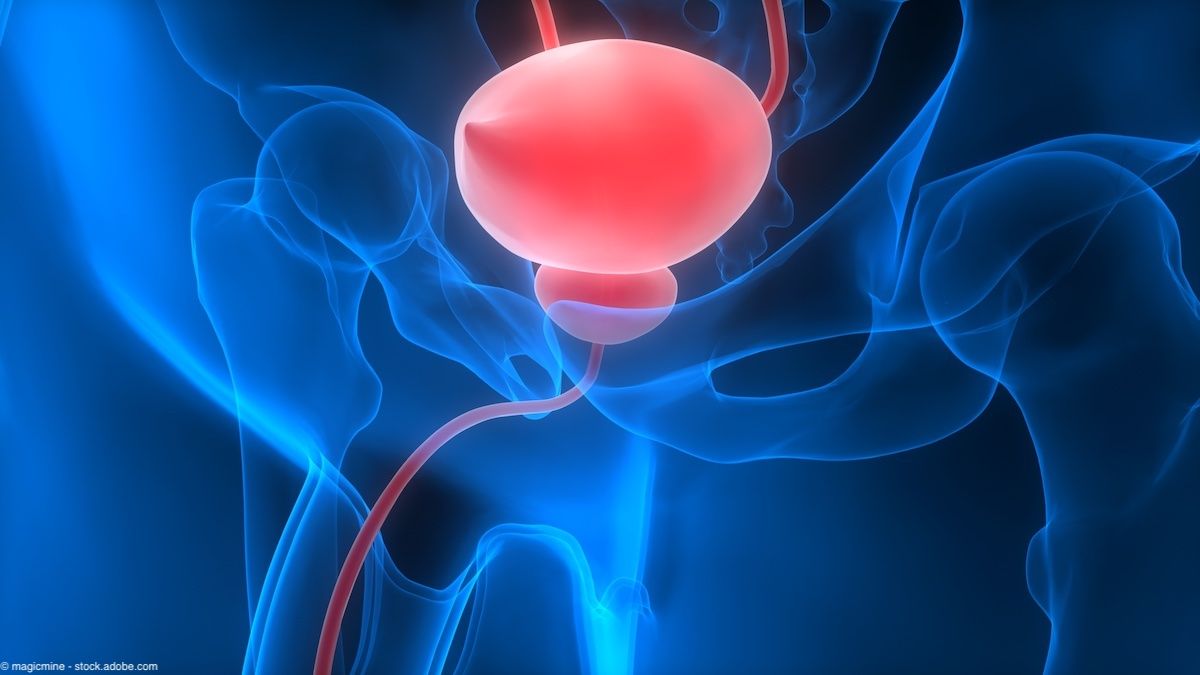Article
Data offer more evidence of botulinum's benefit of OAB
Istanbul, Turkey--Swiss data add to growing evidence that injecting botulinum toxin A (Botox) into the detrusor muscle is a safe and efficient treatment option in patients suffering from overactive bladder, particularly in cases that prove refractory to other more conventional treatment modalities, like anticholinergic agents and physiotherapy.

Overall, 88% of the participants with overactive bladder in the large series showed a significant improvement (p<.001) in bladder function with regard to subjective symptoms and urodynamic parameters.
The open-label, prospective, non-randomized trial has treated 100 consecutive patients so far suffering from idiopathic, non-neurogenic OAB and incontinence that was unresponsive to high-dose anticholinergic therapy. The investigators cystoscopically injected 100 units of botulinum toxin A (diluted in 10 mL 0.9% saline solution) into the detrusor muscle at 20 different sites, sparing the trigone.
In the study, Dr. Schmid, working with Brigitte Schurch, MD, and colleagues, kept a micturition diary and performed neurologic status examinations, full urodynamics, urine samples, and bladder biopsies in all participants before treatment. Reflex volume, maximal bladder capacity, detrusor compliance, and episodes of urgency, incontinence, frequency, and nocturia, were measured. Clinical and urodynamic follow-up examinations and quality-of-life assessments were carried out at baseline and 4, 12, and 36 weeks after treatment.
The study group comprised 23 male and 77 female patients with a mean age of 57 years (range, 29 to 82 years).
The study revealed that urgency completely disappeared in 82% of the study participants and incontinence in 86%, within 1 to 2 weeks after botulinum injections.
Frequency decreased from 14 to 7 micturitions/day and nocturia from 4 to 1.5 times/night. Maximal bladder capacity and detrusor compliance increased from a mean of 246 mL to 381 mL, and from 24 mL/cm H2O to 41 mL/cm H2O, respectively.
Baseline detrusor instability (mean reflex volume, 169 mL) disappeared in 74% of pa-tients and increased to 229 mL in the remaining 14 patients. Volume at first desire to void (first-urge volume) in-creased from an average of 126 mL to 212 mL, and urge volume increased from a mean 214 mL to 309 mL.
A number of specialists attending the session noted that a recent German study involving the use of botulinum injections in non-neurogenic OAB cases revealed more than 50% dissatisfaction among patients due to persistent urgency. The German study involved idiopathic cases, as well as cases of OAB resulting from de novo urgency/frequency following surgery and interstitial cystitis. Researchers observed that success with botulinum may depend on which cases the physician attempts to treat.
"The difference in success may lie in the fact that the German group consisted of a rather mixed patient collective of IC, idiopathic and de novo OAB, whereas our group was more uniform, containing only idiopathic OAB patients with obviously better pre-conditions for a successful outcome. Furthermore, I think success depends strongly on injection technique and on the adequate dose," Dr. Schmid said.
Apart from three temporary cases of urinary retention and 10 cases that developed urinary infection, Dr. Schmid noted no severe side effects.
The QoL assessments (effect on life, household tasks, sleep, and related measures), made at weeks 4 and 12 revealed a significant subjective improvement in all urge-related items. Some of these were reduced by half at the 36-week follow-up. The duration of efficacy was an average of 9 months.
Eight patients experienced poor clinical benefits from botulinum therapy. The investigators discovered on analysis that these cases had a very low preoperative detrusor compliance and a small bladder capacity due to bladder wall fibrosis.
Dr. Schmid explained that the positive neurotoxic effect of botulinum injections is due to a reversible block of the neuromuscular transmission of acetylcholine in smooth and skeletal muscle. Botulinum is also associated with modulating bladder reflexes and blocking suburothelial afferent nerve transmitters, he said.















